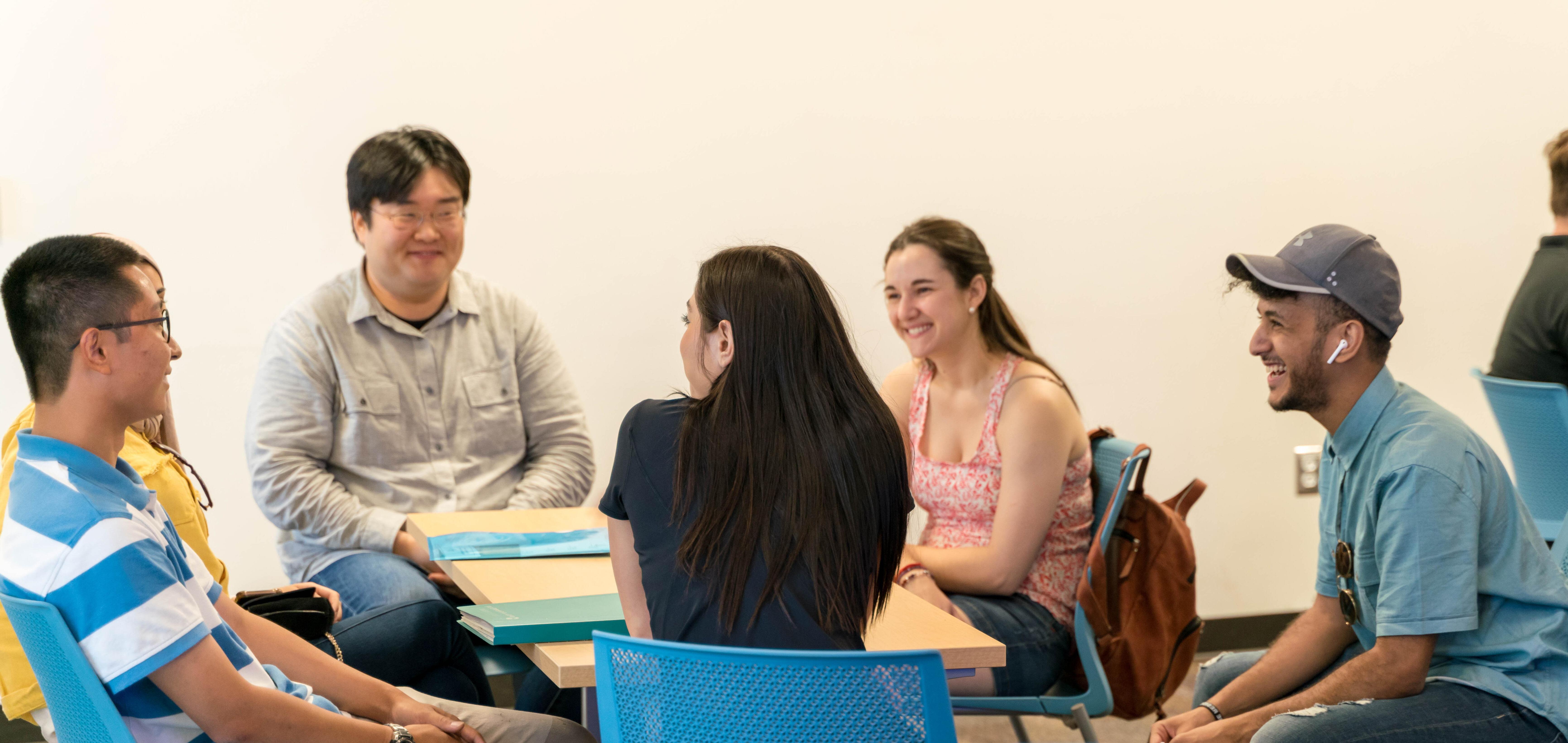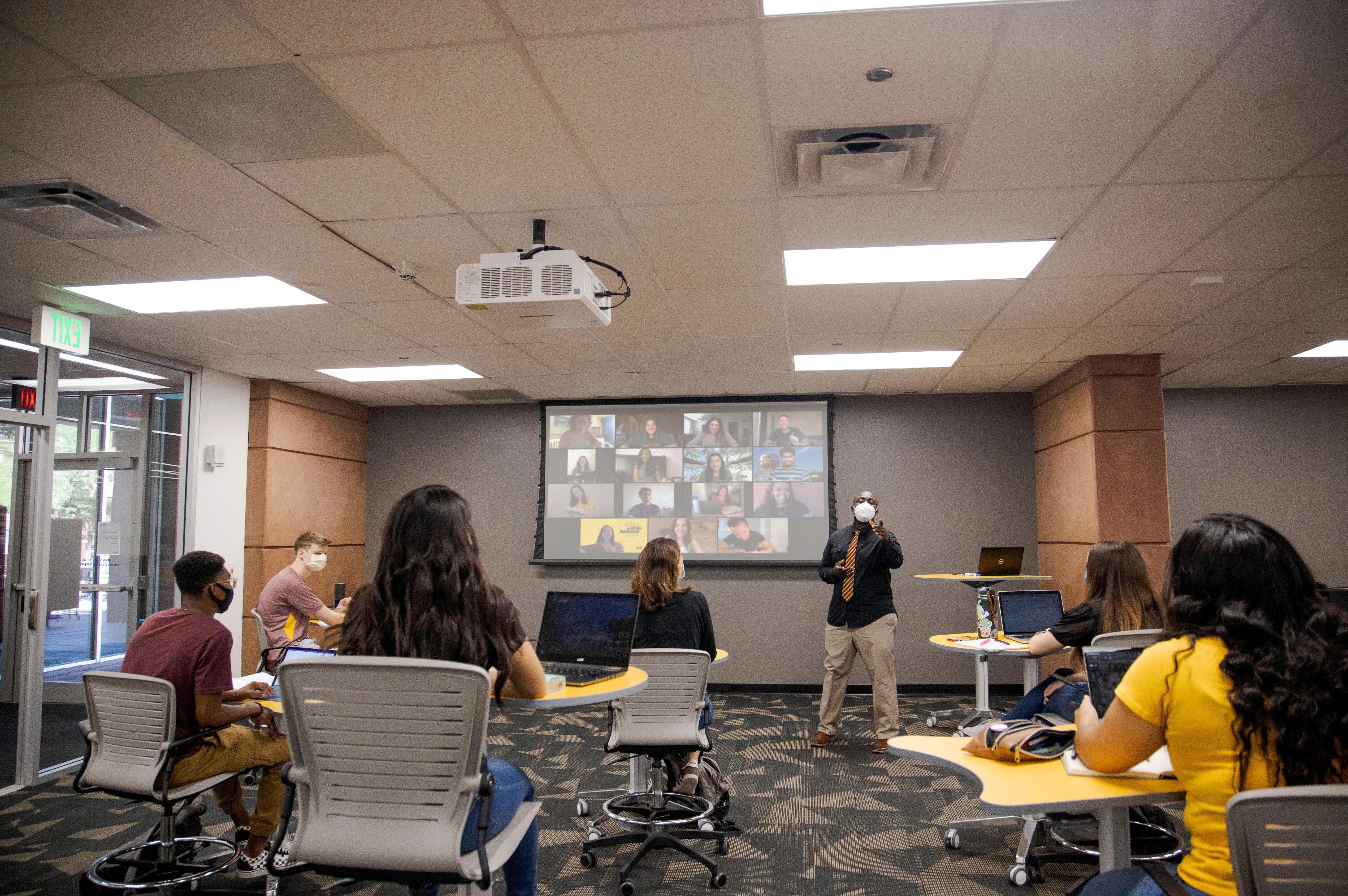Student Success Inspiring Teachers for







120 hours
Modality: This online course will be facilitated asynchronously by an ASU Global Launch educator.

Certification: At the end of the program, learners who have successfully completed the program (with grades of 80% or higher) will be awarded an ASU 120-hour TESOL certificate. This can be an electronic copy or a paper copy, depending on program structure.
The online TESOL certification course curriculum is divided into eight (8) parts:

• Seven basic language learning paradigms.
• Foundational principles: motivation, risk taking, and finding balance in the teaching profession.
• Second or foreign language theories
• Practices for teaching and assessing listening, speaking, and pronunciation
• Focus on the Communicative Approach
• Designing lesson plans based on principles and knowledge of learning objectives, assessment plans, methods, materials, and learning activities
• Finding and preparing appropriate teaching materials through careful analysis, adaptation and creation of professional resources
• Implementing the Communicative Approach
• Using the 80/20 principle (students talk and interact for 80% of the class time; teachers talk for 20% of the time)
• Craft a personal teaching philosophy,
• Reflect on the teacher’s primary purpose, style, and techniques of teaching.
• Observe six ESL professionals and reflect on how they teach.
• Aspects of listening, speaking, and pronunciation that are challenging for students and teachers
• basic strategies to ease the acquisition and instruction of listening, speaking, and pronunciation
• Information on reading and writing courses
and Grammar
• Integration of grammar instruction within those courses
• Examination basic reading and writing strategies.
• Key concepts to effectively integrate technology into teaching, without overshadowing language learning
• Current and future trends in educational technology

7: Part 8:
• Strategies for implementing these trends in the classroom
• Apply and expand knowledge from the course
Part ASU | Global Launch

Station Rotation in the English Language Classroom


10-15 hours

Learning stations are an effective tool for increasing student engagement, managing classes of any size, and keeping lessons student-centered, all while helping students to achieve learning outcomes. In this course, ASU experts discuss what stations are, types of stations, aligning stations with objectives, implementing them in class, and benefits of using stations.
Through Station Rotation you will gain the ability to prepare your own learning stations where students can develop all four language skills: reading, writing, listening, and speaking and more!

Learn about:
• explanation of stations
• types of stations
• how to align station activities with lesson objectives
• steps for implementing station
Creating and Implementing Online Courses

Engaging Learners in Remote and Online Courses

80 hours

Created for the Department of State OPEN program, this course guides participants in instructional design practices and online course development. Participants learn the basics of instructional design, how to conduct a needs analysis, how to create a course outline and module framework, how to adapt the module framework for a hybrid class, how to create assessments and learning assets, and how to incorporate online language learning tools. Each participant creates a final action plan that they will implement in their own context.
Certification: At the end of the course, learners who have successfully completed the course (with grades of 80% or higher) will be awarded an ASU certificate.

Module 1: Analyze
Introduction to Instructional Design, Needs Analysis, and Course Design
Module 2: Design Course Outline
Module 5: Develop Assessment
Module 3: Design
Module Framework
Module 4: Design
Hybrid Module Framework

Module 6: Develop Learning Asset
Module 7: Implement Online Tools
Module 8: Evaluate Online Course Evaluation and Final Action Plan


In this course, participants will learn various types of blended and hyflex (hybrid, flexible) course design, how to connect with students in both synchronous and asynchronous online courses, how to craft meaningful communications with students using online tools, how to create community and social learning among class members, and many different practical ways to engage students. In each module, participants reflect on their own teaching context and how they can apply their learning with their own students.
Lesson 1: Online, Blended and Hyflex Courses
Lesson 2: Teacher Presence
Lesson 3: Effective Communication
Lesson 4: Social Learning
Lesson 5: Practical Application Tips for Online, Blended and Hyflex Courses






This course is designed to help educators and institutions provide learners with expanded learning opportunities. The HyFlex approach offers a flexible, hybrid learning environment, thereby allowing the education community to better meet the personal, unique needs of learners in an ever-changing world. Learners will do three main things in this course: differentiate between in-person, online, and HyFlex courses; create learning activities for HyFlex courses; and understand the importance of formal course evaluation for future course development.
Module 1: Values and Principles of Hybrid Flexible Course Design
Module 2: Creating an Effective Learning Environment for All Students
Module 3: The Faculty Experience

Module 4: The Learner Experience
Module 5: The Administrator Experience

15-20 hours

This course introduces faculty to the Flipped Classroom Model of pedagogy. Participants learn the pedagogical benefits of exposing students to course content outside of class and engaging students in active, collaborative learning during class sessions. Participants plan lessons, develop assessment tasks, and integrate online tools to flip the classroom and facilitate student success.
Module 1:
Introduction to the Flipped Classroom Model


Module 2: Planning a Lesson for the Flipped Classroom
Module 3: Assessment in the Flipped Classroom
Module 4: Online Tools for the Flipped Classroom

Teaching Students in English as a Medium of Instruction (EMI) Contexts
Best Practices for Online Teaching and Learning in EMI Contexts

Engaging and Supporting Learners in EMI Contexts
Clear Classroom Communication: Defining Difficult Concepts

20-25 hours

This course provides faculty with best practices for teaching students in English as a Medium of Instruction (EMI) contexts. Students in EMI contexts are learners who study academic subjects in a second or additional language. This course gives participants the strategies and tools to support EMI learners in academic settings, to help overcome language barriers, and to manage students’ language issues more effectively. In each module, faculty learn a concept, create a plan to use it in their classroom, and then reflect on its implementation.
Module 1:

Identifying Language Issues in Academic Writing
Module 2:
Giving Effective Feedback on Academic Writing Assignments
Module 3: Identifying Language Issues in Academic Speaking
Module 4:
Giving Effective Feedback on Academic Speaking Assignments
Module 5: Creating Effective Prompts
Module 6: Building Glosses and Glossaries
Module 7:
Incorporating Academic Phrases in Academic Discourse
Module 8: Giving Effective Oral Instructions

15-20 hours

This course provides faculty with best practices for online teaching and learning in English as a Medium of Instruction (EMI) contexts. EMI students take academic subjects in a second or additional language. This course gives participants the strategies and tools to develop learning objectives and activities that will best support EMI students in online settings. These strategies and tools also help to increase student engagement in online environments.
Module 1: Designing an LMS Module Framework
Module 2: Providing Clear Online Instructions

Module 3: Developing Online Discussions
Module 4: Using Online Peer Review
Module 5: Evaluating Instructional Videos
Module 6: Designing Online Readings
15-20 hours

This course provides faculty with best practices for teaching in English as a Medium of Instruction (EMI) contexts. EMI students pursue academic subjects in a second or additional language. This course gives participants the strategies and tools to support EMI students in academic settings. These strategies and tools contribute to building EMI students’ skills for academic success.
Module 1:
Creating a Student-Centered Classroom


Module 2:
Facilitating Discussions

Module 3: Scaffolding Academic Lectures
Module 4:
Scaffolding Academic Reading Content
Module 5: Developing Students’ Questioning Skills
Module 6:
Fostering Learner Autonomy

In this course, learners are introduced to teaching strategies for defining a term while being aware of their audience and simplifying their language. They also learn seven strategies to promote student learning. Next, they analyze models of teaching and then create their own lessons and receive feedback. The course also includes some pronunciation tips.


Module 1: Course Overview
Module 2: Learn: Teaching Strategies
Module 3: Model: Analyze Teaching
Module 4: Practice: Pronunciation Tips
Module 5: Apply: Practice Teaching



Professional Development for Teacher Trainers guides U.S. Department of State Online Professional English Network participants in improving their ability to develop an effective teacher-training course and plan engaging workshops or training sessions. Each of the 8 modules takes 8-10 hours to complete and involves participating in discussions, watching and reading instructional videos and readings, and submitting reflection and application tasks.
Module 1:

Transform! Leading a teacher training workshop vs. classroom teaching
Module 2:
Investigate! Doing a comprehensive needs analysis
Module 3:
Create! Crafting an impactful training for your specific academic context

Module 5: Engage! Engaging participants
Module 6: Mentor! Mentoring colleagues
Module 7: Sustain! Sustaining engagement: Communities of practice for teacher support and development
Module 4: Pitch! Pitching the training to administration and colleagues
Module 8: Evaluate! Evaluating your training course



3-5 hours

Teachers can set their students up for success, without burning out. In this course, participants will learn how to motivate and inspire students with simple techniques, how to be creative, even within a standardized curriculum, the importance of mentorship with other teachers, and how to find more time through counterbalance.

Lesson 1: The Importance of Soft Skills in Education
Lesson 2: Motivation and Inspiration
Lesson 3: Creativity and Negotiation
Lesson 4: Coaching and Mentoring
Lesson 5: Curiosity and Energy



